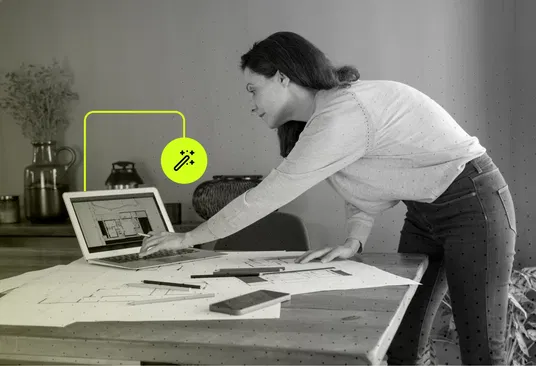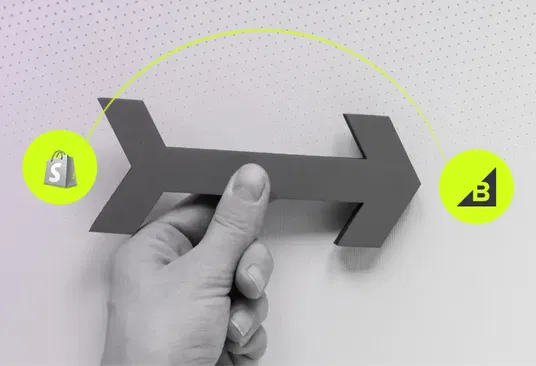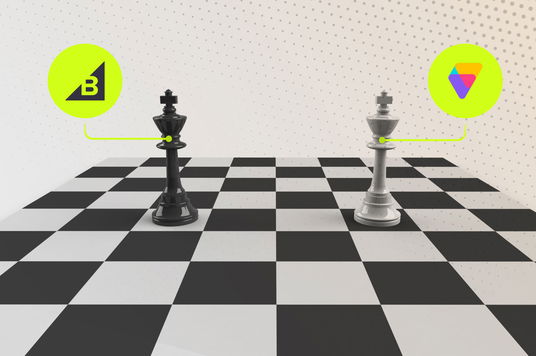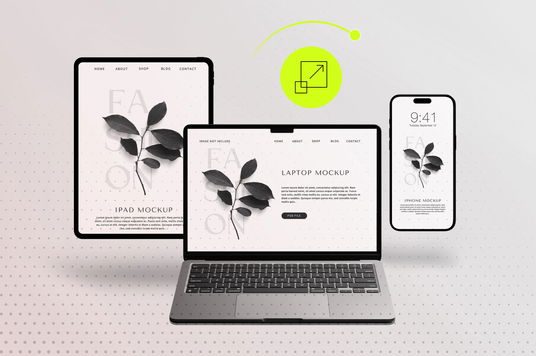Building a DIY Product Configurator That Actually Converts

- Why DIY Product Configurators Drive Conversions
- Types of DIY Product Configurators
- Essential Features for High-Converting Configurators
- BigCommerce Custom Product Setup for Projects
- Building Drag-and-Drop DIY Project Builders
- Conversion Optimization Strategies
- Technical Implementation Best Practices
- Real-World Success Stories
- Frequently Asked Questions
- Key Takeaways
Why DIY Product Configurators Drive Conversions
The DIY and home improvement market is experiencing unprecedented growth, with consumers increasingly taking on complex projects themselves. However, DIY product configurator for ecommerce solutions remain underutilized despite their proven ability to increase conversions by 40-60% for complex product purchases.
Traditional product pages fail DIY customers because they can't visualize how individual components work together in their specific project. A well-designed configurator bridges this gap by allowing customers to build, customize, and price their complete project before purchasing.
💡 Market Insight: Home improvement stores with interactive configurators see 45% higher average order values and 35% fewer returns compared to traditional catalog-based selling approaches.
The challenge isn't just building a configurator—it's creating one that actually converts browsers into buyers. This requires understanding customer psychology, technical implementation, and conversion optimization principles specific to DIY purchasing behavior.
"The most successful DIY configurators don't just let customers build products—they guide them through the entire project journey, from initial concept to final purchase, building confidence at every step."
— Home Improvement eCommerce Industry Report 2025
Types of DIY Product Configurators
Different DIY projects require different configurator approaches. Understanding these types helps you choose the right solution for your product builder for home improvement stores.
Project-Based Configurators
These configurators focus on complete project outcomes rather than individual products. Perfect for:
- Kitchen renovations
- Bathroom remodels
- Deck building projects
- Garden landscaping
Project-based configurators guide customers through design decisions while automatically calculating materials, quantities, and compatibility requirements. They're particularly effective for home improvement and DIY projects that involve multiple coordinated components.
Component Assembly Configurators
These focus on building custom products from standardized components:
- Custom storage solutions
- Modular furniture systems
- Workshop organization systems
- Custom lighting fixtures
Component configurators excel at handling complex compatibility rules and pricing calculations for custom tool builder for workshop supplies and similar applications.
Specification-Driven Configurators
These configurators help customers specify exact requirements for custom-manufactured items:
- Custom cabinetry
- Made-to-measure windows
- Custom countertops
- Bespoke storage solutions
Traditional Approach
- Static product catalogs
- Manual quote requests
- High abandonment rates
- Lengthy sales cycles
Configurator Approach
- Interactive project building
- Real-time pricing
- Immediate gratification
- Faster purchase decisions
Essential Features for High-Converting Configurators
Successful DIY product configurator for ecommerce implementations share several key features that directly impact conversion rates:
Visual Project Preview
Real-time 3D visualization or high-quality 2D renderings help customers understand their project outcome. This feature alone can increase conversion rates by 25-35% for complex DIY projects.
Intelligent Compatibility Checking
Automatic validation prevents customers from selecting incompatible components, reducing frustration and returns. This is crucial for complex home improvement projects where component compatibility is critical.
Real-Time Pricing and Availability
Instant price updates and stock availability prevent checkout surprises and abandoned carts. Include:
- Component-level pricing breakdown
- Total project cost calculation
- Shipping cost estimation
- Alternative component suggestions
Guided Configuration Process
Step-by-step guidance helps customers make informed decisions without feeling overwhelmed:
- Project Type Selection: Help customers choose the right starting point
- Requirement Gathering: Collect key specifications and constraints
- Component Selection: Guide through compatible options
- Customization: Allow fine-tuning of details
- Review and Purchase: Final confirmation with clear next steps
Save and Share Functionality
Allow customers to save configurations for later review or share with family members, contractors, or friends. This feature significantly improves conversion rates for high-consideration purchases.
🎯 Conversion Tip: Implement email capture during the save process to enable follow-up marketing for abandoned configurations. This can recover 15-25% of otherwise lost sales.
BigCommerce Custom Product Setup for Projects
BigCommerce custom product setup for projects offers several advantages for DIY configurators, including robust API support, flexible product options, and scalable architecture.
BigCommerce Configuration Advantages
BigCommerce provides several features that make it ideal for complex DIY configurators:
- Unlimited Product Variants: Handle complex component combinations without platform limitations
- Advanced Pricing Rules: Implement volume discounts, bundle pricing, and dynamic cost calculations
- Robust API: Enable real-time inventory checking and pricing updates
- Custom Fields: Store configuration data and project specifications
Implementation Architecture
A successful BigCommerce DIY configurator typically involves:
- Product Structure Design: Create parent products for project types with child components
- Configuration Engine: Build custom logic for compatibility and pricing rules
- API Integration: Connect configurator to BigCommerce for real-time data
- Cart Integration: Seamlessly add configured projects to shopping cart
💻 Technical Note: BigCommerce's Stencil framework allows for deep customization while maintaining platform stability. Our home improvement eCommerce development team specializes in creating custom configurators that leverage BigCommerce's full potential.
Custom Product Options Setup
Configure BigCommerce product options to support complex DIY projects:
| Option Type | Use Case | Configuration Example |
|---|---|---|
| Multiple Choice | Material selection | Wood type, finish options |
| Text Input | Custom dimensions | Length, width, height |
| Number Input | Quantity specification | Number of shelves, drawers |
| File Upload | Custom designs | Room layouts, sketches |
Building Drag-and-Drop DIY Project Builders
A drag-and-drop DIY project builder provides the most intuitive user experience for complex configuration tasks. This approach works particularly well for workshop supplies, storage solutions, and modular systems.
User Interface Design Principles
Effective drag-and-drop interfaces follow specific design principles:
Component Library Organization
- Categorized Components: Group similar items logically
- Search Functionality: Enable quick component discovery
- Visual Thumbnails: Show clear component representations
- Compatibility Indicators: Highlight compatible/incompatible items
Canvas Design
- Grid System: Provide alignment guides and snap-to-grid functionality
- Zoom Controls: Allow detailed work and overview perspectives
- Layer Management: Enable complex project organization
- Undo/Redo: Support experimental design approaches
Technical Implementation
Modern drag-and-drop builders typically use:
- HTML5 Canvas or SVG: For rendering and manipulation
- JavaScript Libraries: Such as Fabric.js or Konva.js for interaction
- Real-time Validation: Immediate feedback on design constraints
- Progressive Enhancement: Fallback options for limited devices
🛠️ Development Insight: The most successful custom tool builder for workshop supplies implementations balance feature richness with performance. Start with core functionality and add advanced features based on user feedback.
Mobile Optimization
While drag-and-drop works best on desktop, mobile optimization is crucial:
- Touch-Friendly Controls: Larger touch targets and gesture support
- Simplified Interface: Reduced complexity for smaller screens
- Alternative Input Methods: List-based selection as fallback
- Cross-Device Sync: Allow starting on mobile, finishing on desktop
Conversion Optimization Strategies
Building a configurator is only half the battle—optimizing it for conversions requires ongoing testing and refinement.
Reducing Configuration Abandonment
Common reasons customers abandon configurators and solutions:
Common Problems
- Overwhelming complexity
- Unclear pricing
- Technical difficulties
- Missing information
Optimization Solutions
- Progressive disclosure
- Real-time price updates
- Robust error handling
- Contextual help system
Trust Building Elements
DIY projects represent significant investments, making trust crucial for conversions:
- Material Specifications: Detailed component information and certifications
- Installation Guides: Clear assembly instructions and video tutorials
- Customer Reviews: Project photos and testimonials from real customers
- Expert Support: Access to technical assistance and design consultation
Pricing Psychology
How you present pricing significantly impacts conversion rates:
- Component Transparency: Show individual item costs to build trust
- Value Anchoring: Compare to professional installation costs
- Bundle Savings: Highlight discounts for complete projects
- Financing Options: Offer payment plans for larger projects
"The most effective DIY configurators make customers feel like experts, not overwhelmed beginners. They provide just enough guidance to build confidence without restricting creativity."
— UX Research Study on DIY eCommerce Behavior
Technical Implementation Best Practices
Successful configurator implementation requires careful attention to performance, scalability, and user experience.
Performance Optimization
Configurators can be resource-intensive, making performance optimization critical:
- Lazy Loading: Load components and images only when needed
- Caching Strategy: Cache configuration rules and pricing data
- Progressive Enhancement: Start with basic functionality, enhance with JavaScript
- CDN Integration: Serve static assets from global edge locations
Data Architecture
Proper data structure is crucial for maintainable configurators:
- Product Hierarchy: Organize components in logical parent-child relationships
- Compatibility Rules: Define clear rules for component interactions
- Pricing Logic: Separate pricing rules from product data for flexibility
- Configuration Storage: Design efficient storage for customer configurations
API Design
Well-designed APIs enable smooth configurator operation:
- RESTful Endpoints: Clear, predictable API structure
- Real-time Updates: WebSocket connections for live pricing and availability
- Error Handling: Graceful degradation when services are unavailable
- Rate Limiting: Prevent abuse while maintaining responsiveness
⚡ Performance Tip: Implement client-side validation for immediate feedback, backed by server-side validation for security. This approach provides the best user experience while maintaining data integrity.
Real-World Success Stories
These case studies demonstrate the impact of well-implemented DIY configurators on business metrics.
Case Study 1: Kitchen Cabinet Configurator
Challenge
A kitchen cabinet manufacturer struggled with high quote abandonment rates and lengthy sales cycles for custom orders.
Solution
Implemented a 3D kitchen configurator with real-time pricing, material selection, and instant quote generation.
Results
- 65% increase in quote completion rates
- 40% reduction in sales cycle length
- 25% increase in average order value
- 50% reduction in customer service inquiries
Case Study 2: Workshop Storage System Builder
Challenge
A workshop equipment supplier needed to help customers design custom storage solutions without overwhelming them with options.
Solution
Created a custom tool builder for workshop supplies with drag-and-drop interface and intelligent space optimization.
Results
- 80% increase in configuration completion
- 35% higher conversion rate
- 45% increase in customer satisfaction scores
- 30% reduction in product returns
Case Study 3: Deck Building Configurator
Challenge
A lumber and decking supplier wanted to help customers plan complete deck projects with accurate material calculations.
Solution
Developed a comprehensive deck configurator with 3D visualization, material optimization, and installation guidance.
Results
- 55% increase in project completion rates
- 70% improvement in material accuracy
- 42% increase in average project value
- 60% reduction in customer support calls
🎯 Success Pattern: All successful implementations shared common elements: intuitive interfaces, real-time feedback, comprehensive guidance, and seamless integration with existing eCommerce platforms. Our home improvement eCommerce specialists can help you implement similar solutions.
Frequently Asked Questions
1. How much does it cost to build a DIY product configurator?
Costs vary significantly based on complexity and features. Basic configurators start around $25,000-$50,000, while advanced systems with 3D visualization, AI recommendations, and complex pricing rules can range from $75,000-$200,000+. The investment typically pays for itself through increased conversions and reduced support costs.
2. How long does it take to develop a configurator?
Development timelines typically range from 12-24 weeks depending on complexity. Simple configurators can be completed in 8-12 weeks, while complex systems with custom 3D rendering and advanced features may take 20-30 weeks. Planning and requirements gathering are crucial for staying on schedule.
3. Which eCommerce platforms work best for configurators?
BigCommerce, Shopify Plus, and Adobe Commerce are the most popular choices. BigCommerce offers excellent API flexibility and unlimited variants, making it ideal for complex configurations. The choice depends on your specific requirements, existing platform, and technical capabilities.
4. Do configurators work well on mobile devices?
While configurators work best on desktop, mobile optimization is essential as 40-50% of users will access them on mobile devices. Successful mobile implementations use simplified interfaces, touch-friendly controls, and progressive enhancement techniques.
5. How do you handle complex pricing calculations?
Effective configurators use rule-based pricing engines that can handle volume discounts, material costs, labor calculations, and shipping estimates. Real-time API integration with your ERP or inventory system ensures accurate pricing and availability information.
6. What's the biggest challenge in configurator development?
The biggest challenge is balancing complexity with usability. Customers need enough options to create their ideal solution without feeling overwhelmed. This requires careful UX design, progressive disclosure, and extensive user testing throughout development.
7. How do you measure configurator success?
Key metrics include configuration completion rates, conversion rates, average order value, and customer satisfaction scores. Also track technical metrics like load times, error rates, and mobile usage patterns to identify optimization opportunities.
8. Can configurators integrate with existing inventory systems?
Yes, modern configurators can integrate with most ERP, inventory management, and eCommerce systems through APIs. This enables real-time stock checking, automated pricing updates, and seamless order processing from configured products.
Key Takeaways
Building a DIY product configurator that actually converts requires more than just technical implementation—it demands deep understanding of customer psychology, careful UX design, and ongoing optimization.
Here's what to remember:
- User Experience is Everything: Intuitive interfaces drive higher completion and conversion rates
- Real-time Feedback Builds Confidence: Instant pricing and compatibility checking reduces abandonment
- Visual Representation Sells: 3D visualization and realistic previews significantly impact purchase decisions
- Mobile Optimization is Essential: Nearly half of users will access configurators on mobile devices
- Integration Enables Success: Seamless connection with inventory and pricing systems ensures accuracy
- Progressive Disclosure Prevents Overwhelm: Guide users through complexity step by step
The DIY and home improvement market continues to grow, with customers increasingly comfortable taking on complex projects. Product builder for home improvement stores and drag-and-drop DIY project builders represent significant opportunities to capture this market while providing genuine value to customers.
Success comes from understanding that configurators aren't just tools—they're experiences that help customers transform ideas into actionable plans. When done right, they build confidence, reduce uncertainty, and create a clear path from inspiration to purchase.
"The most successful DIY configurators don't just help customers buy products—they help them succeed with their projects. That's the difference between a tool and a true business asset."
— 1Center DIY eCommerce Development Team
Ready to Choose the Right Development Partner?
Building a high-converting DIY configurator requires specialized expertise in both eCommerce development and user experience design. Our team has delivered successful configurator projects across multiple industries, from simple component builders to complex 3D visualization systems.
Get Your Free DIY Configurator Consultation →
Or explore our comprehensive home improvement and DIY eCommerce development services to see how we can help your business succeed online.
About 1Center
1Center is a leading eCommerce development agency specializing in complex product configurators and custom eCommerce solutions. Our team of certified developers, UX designers, and eCommerce strategists has delivered successful configurator projects for home improvement stores, manufacturers, and DIY retailers across platforms including BigCommerce, Shopify Plus, and Adobe Commerce. We combine deep technical expertise with industry knowledge to create configurators that convert visitors into customers and customers into successful DIY enthusiasts.
Written byPublished July 13, 2025
1Center


